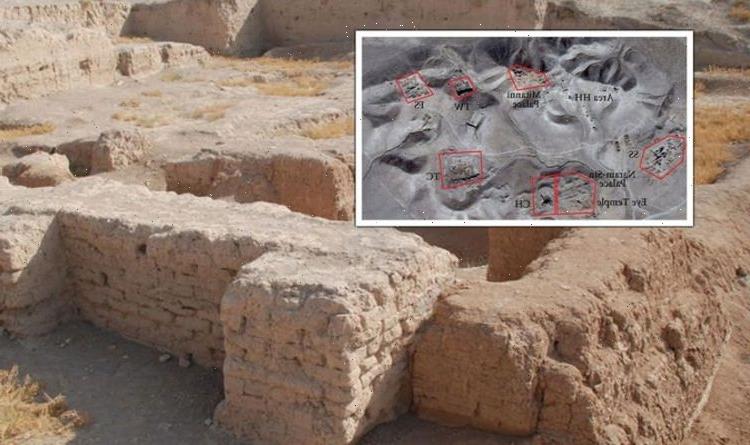Christianity ‘turned to archaeology to promote bible’ says expert
We use your sign-up to provide content in ways you’ve consented to and to improve our understanding of you. This may include adverts from us and 3rd parties based on our understanding. You can unsubscribe at any time. More info
Researchers have spent years siphoning through archives and literature to find out more about the world and its history. Those lucky enough conduct fieldwork in far-flung, ancient spaces in North Africa, South America and the Middle East. Anthropologist Dr Jesse Casana was even luckier.
He was given access to a catalogue of photographs taken by the CORONA Spy satellite.
The program saw a series of US strategic reconnaissance satellites fly over various places of interest between 1960 and 1972, overseen by the CIA.
Among the places documented was the Middle East, with Dr Casana having spent years studying the invaluable images only to find some of the world’s oldest settlements.
When they were taken, the countryside in the region was far less industrialised.


The ancient details remain visible when compared with photos of the landscape today, and were explored during the Smithsonian Channel’s documentary, ‘The Life of Earth: The Age of Humans’.
Speaking during the programme, Dr Casana explained: “We were able to document something like 10,000 previously unknown archaeological sites that through the history of 150 years of archaeologists working in the Middle East, no one had ever documented.”
In 2007, the spy images heralded a breakthrough, revealing details that are still causing experts to reclassify one settlement as the world’s first city.
Researchers believe it is at least 4,000 years older than the Pyramids of Egypt.
JUST IN: AstraZeneca warning as Czech Republic may destroy vaccines

The city, known today as Tell Brak, remains shrouded in mystery.
While researchers do not know what it was called during the time it was inhabited, evidence suggests people once referred to the city as Nagar.
The remnants of it are located on the Khabur plain in northeastern Syria, near the Turkish and Iraqi borders.
Considered one of the largest ancient sites in what is known as northern Mesopotamia, people had already settled there more than 8,000 years ago.
DON’T MISS
China warning as space probe heads to Moon [REPORT]
Brexit victory! Tech firms flock to UK and boost the economy [INSIGHT]
Scotland handed independence boost with £1.8billion investment [ANALYSIS]


It is no surprise: Tell Brak is located in a strategically favourable position, sat on a major route from the Tigris Valley northwards to the mines of Anatolia and westwards to the Euphrates and the Mediterranean.
As a result, the city was likely regarded and acknowledged as an important commercial centre — this was backed up by the evidence of numerous workshops found at the site.
Excavations also revealed evidence of mass production of bowls and other items made of obsidian and white marble, with stamp seals and sling bullets also excavated from the ancient city layers.
Tell Brak’s population were extremely skilled and involved in a number of activities like basalt grinding, flint-working, and weapon making.

Excavations also suggest that the urban-based society was based on rain-fed agriculture
And while mysteries continue to surround the site, contemporary cuneiform tablets — a system of writing used in the ancient Middle East — excavated from Ebla suggest that during the third millennium Nagar was one of the dominant cities in this part of northern Mesopotamia
Scholars have since argued that the city was also a major point of contact at the convergence point between the cities of the Levant in the West and those of Mesopotamia.

It is believed that while the city grew to levels of significant importance in the fourth millennium BC, at the beginning of the third millennium BC, it began to shrink.
This coincides with the end of the so-called Uruk period.
However, around 2,600 BC — when it became known as Nagar — it began to expand again.
Source: Read Full Article
